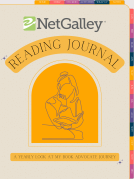
Left Bank of the Hudson
Jersey City and the Artists of 111 1st Street
by David J. Goodwin
This title was previously available on NetGalley and is now archived.
Send NetGalley books directly to your Kindle or Kindle app
1
To read on a Kindle or Kindle app, please add kindle@netgalley.com as an approved email address to receive files in your Amazon account. Click here for step-by-step instructions.
2
Also find your Kindle email address within your Amazon account, and enter it here.
Pub Date Oct 02 2017 | Archive Date Aug 31 2017
Description
In the late 1980s, a handful of artists priced
out of Manhattan and desperately needing affordable studio space discovered 111
1st Street, a former P. Lorillard Tobacco Company warehouse. Over the next two
decades, an eclectic collection of painters, sculptors, musicians,
photographers, filmmakers, and writers dreamt and toiled within the building’s
labyrinthine halls. The local arts scene flourished, igniting hope that Jersey
City would emerge as the next grassroots center of the art world. However, a
rising real estate market coupled with a provincial political establishment
threatened the community at 111 1st Street. The artists found themselves
entangled in a long, complicated, and vicious fight for their place in the
building and for the physical survival of 111 1st Street itself, a site that
held so much potential, so much promise for Jersey City.
Left Bank of the Hudson offers a window into the demographic, political, and
socio-economic changes experienced by Jersey City during the last thirty years.
Documenting the narrative of 111 1st Street as an act of cultural preservation,
author David J. Goodwin’s well-researched and significant contribution
addresses the question of the role of artists in economically improving cities.
As a Jersey City resident, Goodwin applies his knowledge of the city’s rich
history of political malfeasance and corruption, including how auspicious plans
for a waterfront arts enclave were repeatedly bungled by a provincial-minded
city administration. In writing this story, Goodwin interviewed thirteen
artists and residents, two businesses, three government officials, and five
non-profits, civic organizations, and community activists. The book
chronologically explores the history and business of the P. Lorillard Tobacco
Company, its evolution into a bustling arts community, the battle to preserve
the warehouse as a historic structure, and the lessons to be drawn from the
loss and ultimate demolition of the building in 2007, as well as the present
state of the neighborhood.
Setting the facts straight for future generations, Left Bank of the Hudson
provides an illustrative lesson to government officials, scholars, students,
activists, and everyday citizens attempting to navigate the “rediscovery” of
American cities.
Advance Praise
"Left Bank of the Hudson presents a well-researched slice of life in the transformation of Jersey City’s formerly dismal downtown-waterfront district to a new “gold coast” as it details how a group of urban-pioneer artists attempted to save through adaptive use one of the area’s most important manufacturing buildings. While the subject artists lost their homes after a valiant struggle, author Goodwin preserves for them and the former cigarette plant a place in New Jersey history."—Randall Gabrielan, Monmouth County Historian and author of Hoboken: History and Architecture at a Glance
"This is a broad story of urban change from 19th century industrialization to 21st century gentrification through the narrow lens of one building in Jersey City. It served as a tobacco factory and warehouse, deteriorated it was revived by artists who used its vast spaces for studios and (illegal) residences. Purchased by a real estate developer who forced the artists out, it was demolished and replaced by residential towers for the wealthy. A local social, cultural, and political history reflecting global trends, fueled by an argument for architectural preservation and the value of the arts, it should be read by those interested in the past and future of all cities."—Maxine N. Lurie, Professor emeritas, History Department, Seton Hall University
Available Editions
| EDITION | Paperback |
| ISBN | 9780823278039 |
| PRICE | $24.95 (USD) |
| PAGES | 176 |
Average rating from 7 members
Readers who liked this book also liked:
John Kotter; Holger Rathgeber
Business, Leadership, Finance, Nonfiction (Adult)






